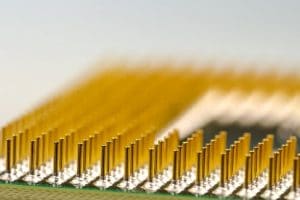“Limited fresh investments are coming into the country, due to which existing plants are running at a sub-optimal capacity,” highlighted the ASSOCHAM-NECTI report.

The Ministry of Electronics and Information Technology (MeitY) should come up with a phased manufacturing plan to encourage manufacturing of electronic components other than mobile phones, a recent ASSOCHAM-NECTI joint study suggested on Wednesday.
Furthermore, the study said that India should focus on reducing component imports and increasing local value addition to become a manufacturing hub. It said that the component ecosystem has not taken foothold due to unfavourable scale factor in establishing commercial viability.
According to ETTelecom, the study noted that as domestic value addition has increased for mobile phones, similar plans are needed to encourage manufacturing of components which are the core ingredients in the overall increase of domestic value addition.
Also, considering that India holds a very small share in the global electronics market, the manufacturers should aim to capture a larger piece of global market by focusing more towards exports.
The ASSOCHAM-NECTI report highlighted that limited fresh investments are coming into the country, due to which existing plants are running at a sub-optimal capacity.
Government should increase export incentives for sectors like computer hardware and peripherals, and light emitted diode (LED) to make India’s manufacturing globally competitive and facilitate domestic component ecosystem growth, suggested the report.
There is a huge opportunity for manufacturers and foreign companies to invest in India’s electrical and electronics manufacturing to achieve government’s target of $400 bn electronics market.
The study mentioned that even though value of electronics imports increased at a compounded annual growth rate (CAGR) of 7.88 percent during FY15-FY17, there has been a steady increase in the rate of manufacturing which stood at a CAGR of 23.28 per cent over the same period. The exports have remained constant at $6 bn.




























